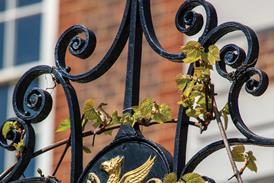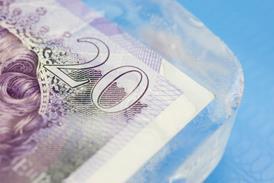Snaking our way upwards, through the lush, bucolic vegetation that hugs the rolling hills surrounding the coastal city of Port Alegre, it is hard to imagine that there is any sort of wine industry, let alone vineyard, in this thick sub-tropical landscape.
As we climb higher towards the gentle rolling hills of the Serra Gaúcha mountain range the landscape changes. Here the air is heavy with the scent of wild flowers and the perfume of the flowering ipe trees which line the road. Turning a corner we catch a glimpse of our first row of vines, trailing downwards on a pocket of clay soil. Welcome to Brazil, not your average stop on the wine route.
I first heard of Brazil’s flourishing wine industry four years ago on a wine tour of Chile. Over the course of a memorable al fresco lunch the owner of one of the more commercial wineries we visited shared his plans for his latest interest in Brazil. He waxed lyrical over its quality and the scale of the potential of the domestic market. I made a mental note to track some Brazilian wine down when I returned to the UK. In the end I never found any and thought nothing more of the country’s wine industry until last summer when I interviewed the writer Louis de Bernières who mentioned his love of a wine he drank in Rio that was made in Brazil.
Brazil isn’t exactly famous for its wine. Free-flowing football, beach volleyball, the girl from Ipanema, yes – but Brazilian merlot? It doesn’t exactly trip off the tongue. But the reality is that potentially Brazil has a really interesting niche in the wine world. Unlike its South American neighbours in Argentina and Chile, the wines are refreshingly high in acidity, with ripe fruit, perhaps lacking a little complexity on the palate, but reminiscent in character of those produced in the Loire. It is the sparkling wines that really excite. Rapacious in acidity, they have a fresh, clean, appley character with a frothy mousse. In short, these are a world away from the oaky, turbo-charged fruit bombs that clutter our supermarket shelves. Cabernet sauvignon, merlot, tannat and egiodola, a French grape with an original cherry aroma all impressed. Examples of chardonnay and viognier also passed the test.
The wine-growing area is situated in the south of the country, well below the equatorial jungle and the carnival-inspired streets of Rio de Janeiro. Here there are five wine-growing regions producing clean, modern, fruit-driven wines. The heartbeat of which is Vale dos Vinhedos, an appellation officially recognised by the EU, which produces merlot to a standard of good cru bourgeois.
There are more than 900 wineries in Brazil producing 3.5 million hectolitres a year, making it the fifth-largest producer in the southern hemisphere. The origins lie with a wave of Italian immigration in the late 19th century. This came mainly from the northern Veneto region, an area known for prosecco, a sparkling wine, and wines that have not been aged in oak – characteristics found in the wines it produces today.
Up in the north of the country amid the arid plains of the São Francisco Valley is one of the most talked about viticultural projects in the world. Owned by the Portuguese winemaker Dão Sul, the agricultural plain is busy ripping up the rule book that the production of good wine is centred on terroir. Thanks to the nearby São Francisco river and a series of huge irrigation pumps, the river banks are ripe with grapes and melons. With 12 hours of sunlight a day, 300 days a year and a wonderful, lush warm atmosphere, it allows the winemakers to harvest when they like. The absence of a winter means the vines never stop producing, enabling multiple harvests from different plots.
Tasting the wines at this year’s Fenavinho, Brazil’s national wine festival, it was difficult to find them inferior to other similarly priced wines from Europe or Australia. It’s a groundbreaking project and it will be interesting to track its development. The first bottles of Brazilian wine are beginning to emerge in the UK via Waitrose and Coe Vintners in Essex, who employ Vianna Junior, Brazil’s only master of wine. There is a clutch of wineries, such as Casa Valduga, Dachery, Casa Perini, Miolo, Lidio Carraro and Rio Sol, that are producing wines that I wouldn’t kick out of the cellar. But the real potential lies with its sparkling wines. The Champenois scoffed when the English started producing sparkling wine. Goodness knows what they will say about Brazil.
Wines of the month
2004 Miolo Lote 43, Vale dos Vinhedos, Serra Gaúcha, Brazil, 12.5%2005 Miolo Millesime, Vale dos Vinhedos, Serra Gaúcha, Brazil, 13%
Millesime is produced in conjunction with Michel Rolland, and is a blend of pinot noir and chardonnay. The acidity and bite surprise with their quality.£152006 Rio Sol Cabernet Sauvignon/Shiraz, Vale do São Francisco, Pernambuco, Brazil, 13%
A bold, deep colour gives way to ripe, balanced, authentic-tasting wine. Close your eyes and you would be hard pushed to guess this was from Brazil.£5.49
Stockists: Waitrose, Coe Vintners, Essex (020 8551 4966) www.coevintners.com
Will Lyons is wine correspondent for Scotland on Sunday newspaper



























No comments yet